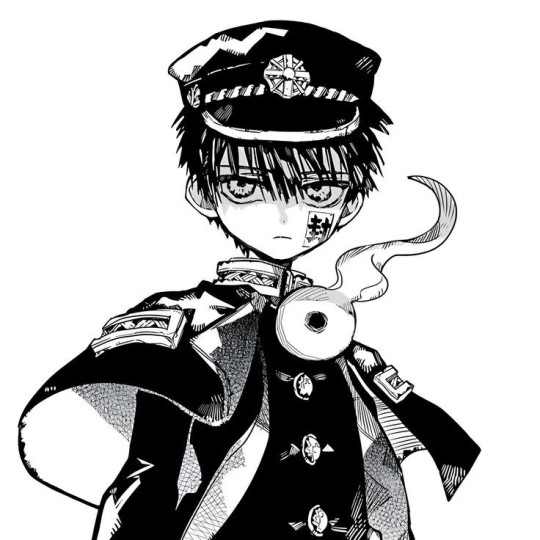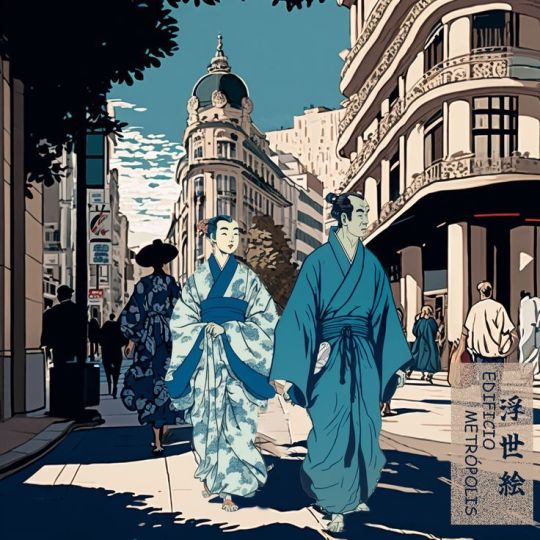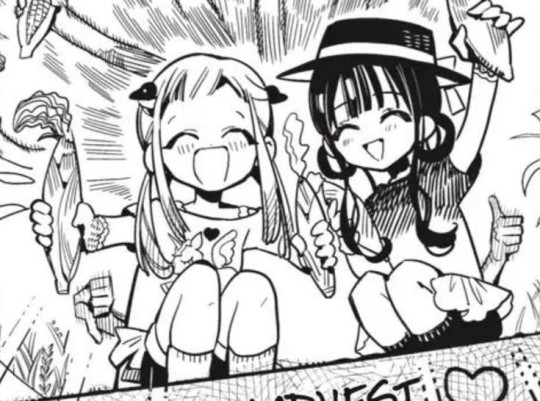#manga japones
Explore tagged Tumblr posts
Text

73 notes
·
View notes
Text
¿Qué hay en AKIHABARA? ¿Por qué es tan famosa esta zona en Tokyo?
AKIHABARA es un barrio de Tokyo muy famoso por su cultura pop y es reconocida mundialmente por ser el centro de la cultura otaku. Pero, ¿qué hay en AKIHABARA?
En este post les comparto algunos detalles interesantes sobre este lugar.
Para empezar, ¿Cuál es la historia de AKIHABARA?
Después de la Segunda Guerra Mundial, Akihabara comenzó como un centro de mercado negro y fue hasta la década de…

View On WordPress
#Akihabara#akihabarajapan#akiba#japón#japan#tokyo#holanihon#akihabara tokyo#tokyo travel#turismo japón#turismo en japón#turismo en tokyo#tokyo japon#anime places#lugares de anime#lugares en japon#lugares famosos#anime y manga#manga japones#cultura de anime#cultura japonesa#comprar anime y manga#anime akihabara#figuras de anime#turismo tokyo#mexicana en japón#mexicana en tokyo#mexicana en japon
1 note
·
View note
Text






⭐ Detective Conan - 2024
#manga#anime#detectiu conan#detectiveconan#detective#detective conan shiho shinichi#detective conan#shinichi kudo#ran mouri#ai haibara#manga anime#anime and manga#animation#manga art#japones#japón#japanese#japan
48 notes
·
View notes
Text






#love#nanami momozono#kamisama kiss#cute#lovers#kamisama hajimemashita#tomoe#tomoe kamisama#nanami kamisama#relationship#japones#anime love#beauttiful girls#beatiful#beauttiful woman#kisses#kiss#pink#orange#anime art#anime and manga#anime
34 notes
·
View notes
Text

#art#artist#fashion#Aesthetic#Illustration#illustrator#love#iloveyou#style#trending#music#musician#new#original#Experimental#contemporary#alternative#indie#beauty#beautiful#drawing#painting#inspiration#inspired#cat#Songs#manga#gallery#Japon#japonais
16 notes
·
View notes
Text
En Japón están a otro nivel contando las cosas. Hay que quererlos.
11 notes
·
View notes
Text

Miss Hokusai: The world is beautiful because of "light" and "shadow."
It is believed that many people have seen the famous image of a giant wave engulfing small boats at sea (The Great Wave Of Kanagawa), drawn with traditional Japanese brushstroke techniques. This is the masterpiece of Katsushika Hokusai, a renowned Edo-period artist known across Japan and the world. His works have inspired many European artists, contributing to the development of a Western art movement influenced by Eastern art, known as Japonism.
However, few people know the name and life of the person behind his success — Katsushika Oei, Hokusai's daughter, who possessed artistic talent in brush painting on par with her father. This is her story, brought to life in the 2016 animated film adapted from the Japanese manga by Hinako Sugiura, titled Miss Hokusai. In Japanese, it is known as Sarusuberi (百日紅), which translates to Crape Myrtle, symbolizing the aesthetics and beauty found in woodblock prints (Ukiyo-e) and Japanese brush art, often filled with images of legends, folklore, landscapes, spirits, or imaginary worlds that float beyond reality.
The world is beautiful with "light" and "shadow": A nameless female artist who lived in her father's shadow and became the light for her blind sister.
In the Edo period, the beautiful and unique works of Hokusai shone brightly throughout Japan, like a radiant light. But who knew that behind his glorious fame, there was a young girl who followed in her father’s footsteps, whose skills were second to none.
According to accounts from people who knew the father-daughter artists, it is said that in the early days, Oei rarely signed her name on her work. Sometimes, she used a pseudonym. Many times, she painted on behalf of her father as a nameless artist and sold the work with Hokusai’s name on it. This was because, during the Edo period, female artists' works were often not accepted, as women were expected not to be painters but to take on roles like housewives, merchants, courtesans, or other professions.
Moreover, it was believed that women lacked the skills to observe the world around them and the sexual experience necessary to convey in good art. In addition, most buyers and art consumers were male, so art was produced primarily to serve and cater to male desires. Examples include paintings of courtesans (Oiran), Geisha artists, or erotic depictions of relationships between women and men, women and women, or men and men, meant to serve as illustrated books for sexual arousal.
Thus, society at that time believed that a woman's perspective in creating art for men would either not sell or fail to fully meet men's emotional and sexual desires. These were the challenges that female artists like Oei in the Edo period had to face. Oei encountered many obstacles and had to hone her skills to fight against criticism and judgment in order to gain recognition within a patriarchal world.
However, since Oei understood this societal rule well, she accepted her role as merely a "shadow" under her father's bright "light." She found happiness in observing the world around her to further develop her skills. Her life was considered quite unusual for a woman in the Edo period. Unlike most women of her time, she had no desire to follow the traditional path of being presented for marriage, settling down with a man, and starting a family. Instead, she lived to serve her and her father's passion for art, as well as to study the natural world around her. This made her a courageous, independent, and self-assured woman, different from other women of her era.
On the other hand, Oei became a "light" for the darkened world of her unfortunate blind sister, "Onao." In the story, we see that whenever Oei takes Onao for a walk, she makes an effort to describe to Onao the shapes, colors, objects, people, or places that Onao cannot see with her own eyes.
Oei also expresses her true femininity without having to hide it. She speaks and treats her sister with gentleness and a bright smile, and the two are always filled with laughter from playing together.
This contrasts with her serious and stern expression, her rough and curt tone, or sometimes her silence, speaking only when necessary to project an image of credibility as the one negotiating on behalf of Hokusai with clients. She also had to behave in a commanding manner as the daughter of an important artist.
We can also interpret her behavior toward her father and all of Hokusai's male apprentices as Oei crossing the gender boundary. Her entering into the male-dominated world required her to act equally strong and bold enough for them to accept her as a capable colleague and artist.
It can be said that Oei needed to play different roles depending on the situation, location, and people she encountered. This also tells us that Japanese society, from that era to the present, has expected individuals to behave according to the roles society dictates.
Although Oei could only be a "shadow" in the male-dominated sphere, she was a crucial supporter who helped her father's fame spread far and wide, becoming an indispensable assistant to Hokusai. Moreover, she remained a "beautiful light" for her sister, fulfilling her role in the female sphere according to her gender.
The other side of the red-light district, as seen through the eyes and brushstrokes of Oei
According to accounts from people who knew Oei, she was not only very observant of her surroundings but also deeply fascinated by "light." Every time there was a fire, Oei would be the first to jump out of bed and run excitedly to see it. Her reason for rushing to witness the flames was different from others—she was captivated by the vibrant, intense colors of the fire, which no paint or pigments of that era could replicate.
Oei tried her best to memorize the colors and movements of the flames so she could capture them in her artwork. Her love for vivid tones, combined with the influence of Western art that was beginning to spread in Japan, led Oei to experiment with a new style. She began creating works that used bright colors to represent "light" and darker shades to symbolize "shadow," which was a departure from traditional Japanese paintings that often emphasized softer tones, simplicity, and linework. These innovations helped to distinguish Oei's paintings.
Moreover, her artwork illuminated a different side of the pleasure quarters—the daily lives of courtesans in the red-light district. Oei’s depictions differed from those of her male contemporaries. While male artists of the time often portrayed courtesans as seductive and erotically appealing, Oei’s work reflected their humanity and ordinary aspects. Though by night these women were viewed as objects of sexual desire, praised for their beauty, and skilled in music, art, dance, and theater to entertain male patrons, they were still considered unworthy of becoming wives or taking a place in society, remaining hidden in the world of nightfall.
But who would know that behind the elaborate makeup, the beautifully adorned courtesans living in the red-light district were simply ordinary women, full of beauty, sweetness, emotions, love, hope, dreams, and desires just like anyone else? Oei captured this reality in her paintings with great depth, and her works became well-known, including pieces such as A Beauty Writing Poetry By the Cherry Blossoms at Night, Night Scene in the Yoshiwara, and Three Women Playing Musical Instruments.
Miss Hokusai is an animated film that not only highlights the talents and importance of women who were no less capable than men but also reflects the challenges women faced under the patriarchal system. These include being objectified, having their work judged by male standards, and having to modify their behavior and identity to fit norms established by men.
At the same time, Miss Hokusai presents a clear perspective on women that many might not expect, helping to convey the importance of women's rights in a society striving for gender equality. The first step toward change should begin with understanding and listening to different perspectives.
#miss hokusai#anime#manga#animation#japanese#oiran#japonism#art#ukiyoe#japan#culture#history#edo period#women#female artists#katsushika hokusai#natural art#red light district#folklore#japanese people
12 notes
·
View notes
Photo

(vía Pinterest)
#Japan#Japón#Japon#culturajaponesa#Japaneseculture#manga#mangajaponés#anime#ukiyoe#tshirts#camiseta#clothes#ropa#fashion#streetart#streetclothes#animeoutfits#camisetasanime#mangaanime#style
39 notes
·
View notes
Text
One Piece


Ace's death was very sad for the fans, and also the death of Edward Newgate
Many fans loved Ace, and also Edward Newgate, because Edward was like Ace's dad.
(Tomb of Ace and Whitebeard at Universal Studios Japan 🇯🇵)
#anime#icons#one piece#anime and manga#mugiwara crew#mugiwara no luffy#monkey d. luffy#mugiwarapirates#anime art#vinsmoke sanji#japan#japones#portgas d ace#ace one piece#edward teach#whitebeard pirates#whitebeard one piece#wh
44 notes
·
View notes
Text


Winter afternoon
#muji#minimalist#minimalism#reading#cozycore#fhuzee#yves klein#Tumblr quotes#japon#Japan#mangacore#manga#parisian vibe#taizo kuroda#Leica
6 notes
·
View notes
Text

#fanart#digital art#kasane teto#kasane territory#anime#anime fanart#vocaloid fanart#vocaloid#idol#japon#utau teto#drawing#utau#utauloid#anime and manga
18 notes
·
View notes
Text



#jibaku shōnen hanako kun#jibaku shounen hanako kun#toilet bound hanako kun#yashironene#yashiro#yashiro nene#akane aoi#manga japones#manga
58 notes
·
View notes
Text

2 notes
·
View notes
Text




☀️ Rurouni Kenshin Fan Art
#manga#anime#japan#kenshin#rurouni Kenshin#himura kenshin#kamiya kaoru#ken#samurai#samurai x#japón#japones#japanese#fanart
17 notes
·
View notes
Text

#art#japan#manga#history#ukiyoe#interracial love#crazy#illustration#religious kink#japonism#vintage#brain damage
2 notes
·
View notes
